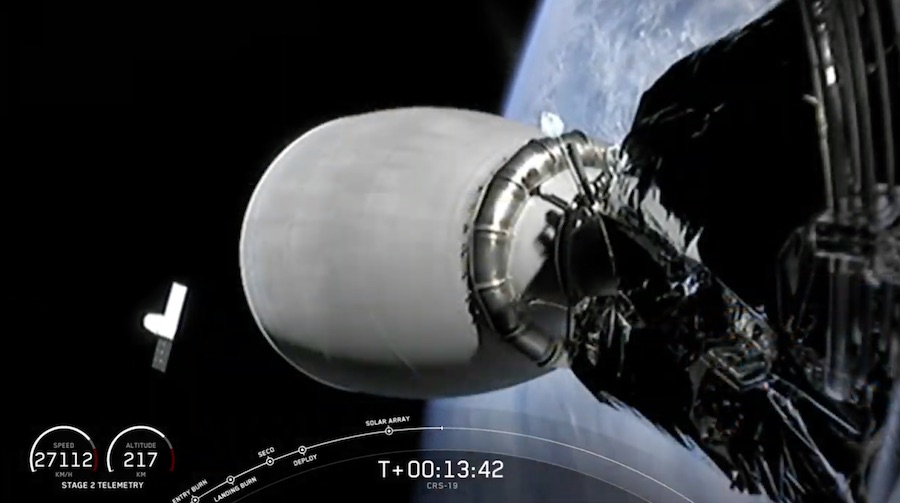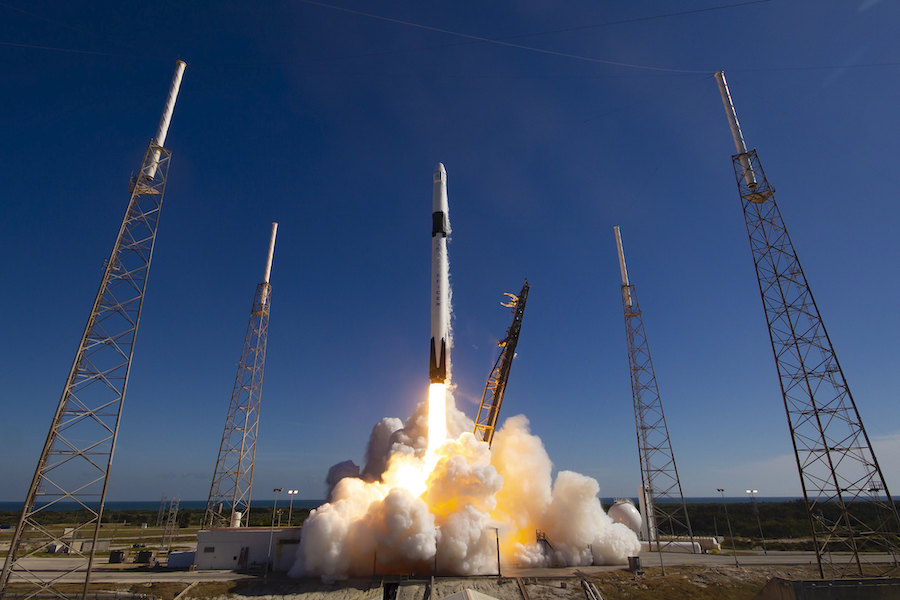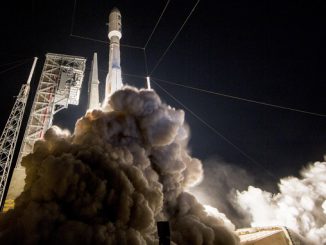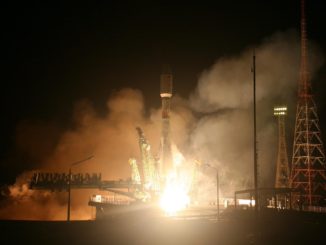
An extended mission for the Falcon 9 rocket’s second stage after launch Thursday with a space station cargo ship helped demonstrate SpaceX’s ability to perform long-duration flight sequences to inject U.S. military payloads directly into high-altitude geosynchronous orbit.
Gwynne Shotwell, SpaceX’s president and chief operating officer, characterized the test as a “big success” Friday in a meeting with reporters at the company’s headquarters in Hawthorne, California.
“This was our third long coast (demonstration),” Shotwell said. “They’re still looking at the data, but I got a thumbs up this morning that it looked like it went really well.”
On Thursday’s launch from Cape Canaveral, the Falcon 9 rocket’s second stage delivered the mission’s Dragon cargo capsule payload to low Earth orbit less than 10 minutes after liftoff. Instead of performing a short deorbit burn soon after releasing the Dragon supply ship in orbit — as the Falcon 9 upper stage typically does — the rocket continued coasting around Earth for several orbits before reigniting its Merlin for a longer disposal firing that lasted 20.1 seconds, according to Shotwell.
“It was a full duration burn,” she said Friday.
An airspace warning notice, or NOTAM, associated with Thursday’s Falcon 9 launch indicated the rocket’s second stage would deorbit over the far southern Indian Ocean more than five hours after liftoff, following a plane change maneuver into a higher-inclination orbit. Most of the rocket body was expected to burn up during re-entry.
SpaceX has performed long-duration coast demonstrations before, most recently after a Falcon Heavy flight in June. On that mission, designated STP-2, the Falcon Heavy’s second stage conducted four upper stage engine burns over three-and-a-half hours to deploy two dozen satellites into three different orbits around Earth.

Engineers wanted to show on Thursday’s mission that the Falcon 9 upper stage could remain properly thermally balanced during lengthy flights required to place large U.S. Air Force or National Reconnaissance Office payloads into high-energy orbits. The Falcon 9’s second stage consumes super-chilled kerosene and cryogenic liquid oxygen propellants.
A SpaceX official said Friday that engineers added baffles to the second stage tanks to help prevent liquid propellant from pooling on the tank walls. The official said SpaceX’s earlier long-duration coast demonstrations, such as the STP-2 mission on the Falcon Heavy, proved the upper stage could perform maneuvers over several hours, but that engineers did not quite see the results they desired.
The Falcon 9 and Falcon Heavy share the same upper stage design.
Long-duration missions often lasting five-to-six hours are required to place satellites on trajectories high above Earth, such as circular geosynchronous orbits, where spacecraft linger over the same geographic region at an altitude of more than 22,000 miles (nearly 36,000 kilometers) over the equator.
Some of the U.S. government’s top secret spy satellites require direct rides to geosynchronous orbits. The Delta 4-Heavy rocket built and flown by United Launch Alliance often delivers those clandestine payloads to space, but ULA is retiring the Delta 4-Heavy. ULA’s next-generation Vulcan Centaur rocket and SpaceX’s launch vehicles are less expensive than the Delta 4-Heavy, which has launched 11 times since 2004.
The U.S. Air Force also occasionally flies satellite missions that require multi-hour launch profiles.
In contrast, SpaceX’s Dragon missions to the International Space Station reach their targeted deployment orbits in less than 10 minutes. A commercial communications satellite is typically released from the Falcon 9 launcher around a half-hour after liftoff.
Email the author.
Follow Stephen Clark on Twitter: @StephenClark1.



